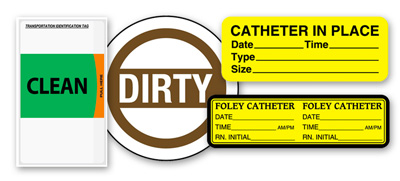Leapfrog Group Hospital Study
The Armstrong Institute for Patient Safety and Quality at Johns Hopkins University recently conducted a study on hospital safety. In fact, their research forms the baseline data for The Leapfrog Group hospital safety grades, a biannual analysis and ranking of hospital safety. The study yields numerous insights. And, one of the key findings is the impact of infections contracted by patients while in the hospital. In fact, infection prevention impacts hospital healthgrades.
Errors, Accidents And Infections
Although deaths due to errors, accidents and infections in hospitals have steadily declined, the numbers are still staggering. An estimated 160,000 lives are lost annually from the avoidable medical errors detailed in the study. And, infections remain the biggest problem. When a patient contracts a:
- Central Line-Associated Bloodstream Infection
- Catheter-Associated Urinary Tract Infection
- Surgical-Site Infections from Colon Surgery
- Hospital-onset Methicillin-resistant Staphylococcus Aureus (MRSA) Laboratory identified Blood Infection
- Hospital-onset Clostridium Difficile (C.diff.) Laboratory-identified Infection
During their hospital stay, there is a 69.2% mortality rate for that patient. Another key study finding is that for hospitals ranked with the highest safety scores, loss of life was only half that rate. Nevertheless, major incidents from infections contracted in the hospital remain a serious challenge for any healthcare organization.
Candida Auris
Furthermore, an emerging fungus called Candida auris creates additional worries. Candida auris causes invasive infections, mainly bloodstream, wound, and ear infections with a high death rate. As of April 11, 2019, the CDC reported 587 documented cases in the U.S.
The fact is, not all infections are life-threatening. But, minimizing the impact of the 2.4 million+ hospital-acquired infections (HAIs) the Centers for Disease Control and Prevention (CDC) reports that occur each year, requires a multi-step approach.
Prescribing Prevention
 Infection prevention requires procedures and policies aimed at the root cause. And hand hygiene, or lack of, remains a primary culprit. Direct contact with bacteria and other types of germs, usually by the hands, is the most frequent mode of infection transmission.
Infection prevention requires procedures and policies aimed at the root cause. And hand hygiene, or lack of, remains a primary culprit. Direct contact with bacteria and other types of germs, usually by the hands, is the most frequent mode of infection transmission.
Setting expectations and using ongoing reminders that encourage patients, visitors and staff to wash hands have proven effective. In fact, messages that focus on preventing patients from catching viruses motivated healthcare professionals to wash their hands at a higher frequency than other messages. Place reminders in high traffic area and in bathrooms and other spots where germs are more likely to populate.
But, hands aren’t the only form of transmission.
Personal Protective Equipment
In another case, the physical body surface-to-surface exchange of bacteria can transmit infections. But, using personal protective equipment (PPE) such as gowns, masks and gloves are clinically proven to reduce the spread of infection. In fact, one study found that healthcare workers that wore PPE during patient contact saw an 80% decrease in bacteria colony forming units (CFUs). The higher the CFUs, the greater the possibility that bacteria can form, multiply and cause infections.
Catheters, Dialysis Machines And Medical Devices
 Urinary tract infections are now the most common type of HAI and approximately 75% of these infections are associated with the insertion of a urinary catheter. But, changing catheters on a regular schedule reduces infection risks. Furthermore, suitable cleaning and disinfecting of the equipment and surrounding environmental surfaces does as well. Plus, using catheter change reminders inform staff of the proper changing times. And dirty/clean tapes are a good way to show the equipment status.
Urinary tract infections are now the most common type of HAI and approximately 75% of these infections are associated with the insertion of a urinary catheter. But, changing catheters on a regular schedule reduces infection risks. Furthermore, suitable cleaning and disinfecting of the equipment and surrounding environmental surfaces does as well. Plus, using catheter change reminders inform staff of the proper changing times. And dirty/clean tapes are a good way to show the equipment status.
Lastly, dialysis machines are another infection hot spot. A checklist like this helps serve as a guide ensuring the medical staff takes the proper cleaning, disinfecting and hand hygiene steps.
Medications
 Medication formulation and dispensing can also cause and spread infections. For example, preparing a compounded sterile product without proper aseptic techniques or using a single-use syringe for multiple applications can both result in contamination, increasing the infection risk.
Medication formulation and dispensing can also cause and spread infections. For example, preparing a compounded sterile product without proper aseptic techniques or using a single-use syringe for multiple applications can both result in contamination, increasing the infection risk.
Furthermore, expired or improperly stored medications are additional culprits. But, proper labeling, dating, and storage of sterile products help deter this problem.
United Ad Label
The fact is, preventing infections and elevating patient safety remain an ongoing challenge for hospitals. Effective labeling and communication can reduce the risk.
United Ad Label supplies infection prevention products that complement the programs and protocols developed by healthcare providers. Contact us to learn more.